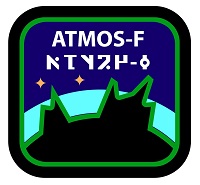Low Pressure Atmosphere
Revision as of 21:56, 22 October 2019 by Maksim-Smelchak (talk | contribs)
A Low Pressure Atmosphere is a type of atmosphere known for possessing thinner and less thick gaseous components.
- While the definitions of a low pressure and the thinner atmospheres overlap, there can be considerable differences as well.
Description (Specifications)
Low pressure atmospheres will have a variety of effects on life, both native and alien:
- Air temperature will be lower and the atmosphere will retain less heat; it will also have extreme differences in temperature between day and night. The air in a thin atmosphere will be drier than that of a Standard Atmosphere, forcing both humans and native wildlife to drink more water.
- A further drawback will be the lack of protection the atmosphere provides from the effects of solar radiation. In addition, with fewer air molecules to push against, native animal life will find it difficult to get into the air. There will be few, if any, flying creatures on these worlds.
- Finally, with less oxygen available, humans will struggle physically, and this struggle will be shared by any combustion-engined vehicles. Railway trains on the high altitude Andes mountains on Terra struggle to cope with some of the serious inclines on the track because the power isn't there - compressors will need to be fitted to engines in order to supply enough air to keep them running. On mid-tech planets (TL-5 to 8) with thin atmospheres, electrical motors might take the place of more inefficient combustion-engined vehicles and power sources. [1]
History & Background (Dossier)
One of the advantages of living on a low pressure or vacuum world is easier access to space. Planetary spaceports on low pressure worlds can often provide construction shipyards at a drastically reduced cost, often competitive with orbital shipyards.
Geneticists often studied the life indigenous to such worlds looking for higher efficiency respiration systems to build into future cybernetics and technological augments.
References & Contributors (Sources)
This list of sources was used by the Traveller Wiki Editorial Team and individual contributors to compose this article. Copyrighted material is used under license from Far Future Enterprises or by permission of the author. The page history lists all of the contributions.
- Marc Miller. Worlds and Adventures (Game Designers Workshop, 1977), 5.Marc Miller, Robert Eaglestone, Don McKinney. Worlds and Adventures (Far Future Enterprises, 2019), 5.
- J. Andrew Keith. Exotic Atmospheres (Game Designers Workshop, 1983), 1-16. (Special Supplement 2 from the periodical Journal of the Travellers' Aid Society 17)
- Marc Miller. Referee's Manual (Game Designers Workshop, 1987), 22.
- Geir Lanesskog. World Builder's Handbook (Mongoose Publishing, 2023), 64-68.Joe Fugate, J. Andrew Keith, Gary L. Thomas. World Builder's Handbook (Digest Group Publications, 1989), 64-68.
- Terrance McInnes, Dave Nilsen. World Tamer's Handbook (Game Designers Workshop, 1994), 11-17.
- Jon F. Zeigler. First In (Steve Jackson Games, 1999), 70,72.
- Paul Drye, Loren Wiseman, Jon F. Zeigler. Interstellar Wars (Steve Jackson Games, 2006), 125-6.
- Citation Missing - Mongoose Traveller Main Rulebook
- Marc Miller. T5 Core Rules (Far Future Enterprises, 2013), 409.
- Paul Elliott. The Universal World Profile (Zozer Games, 2016), TBD.
- Traveller Wiki Editorial Team
- Author & Contributor: Lord (Marquis) and Master of Sophontology Maksim-Smelchak of the Ministry of Science
- ↑ Paul Elliott. The Universal World Profile (Zozer Games, 2016), 14-15.
